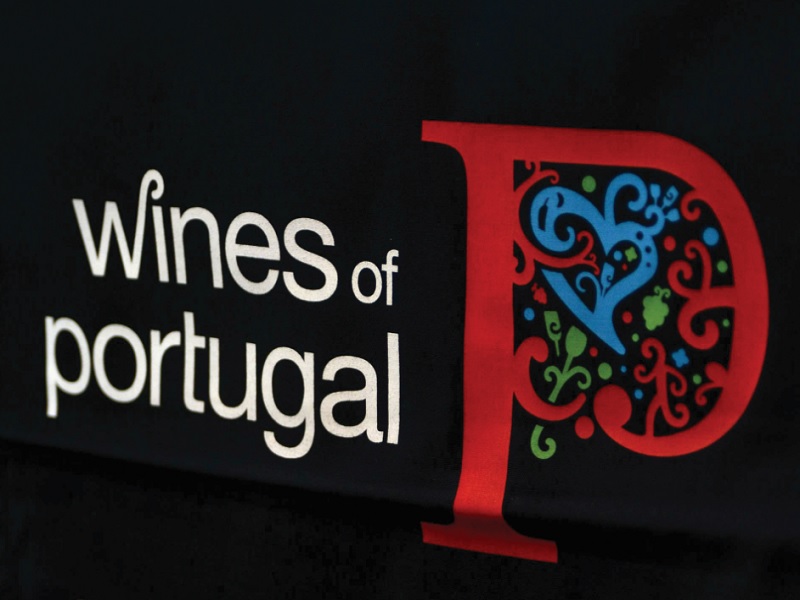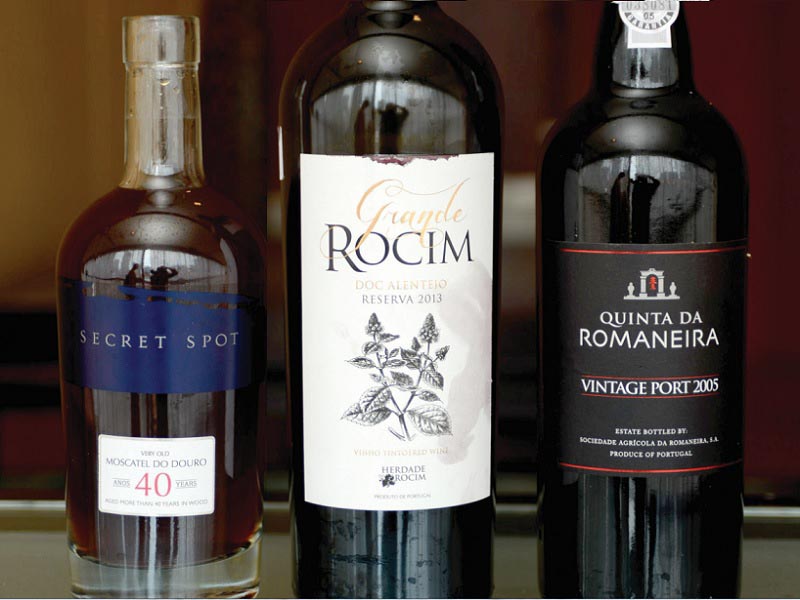Discovering Portugal: Secret Spot, Quinta da Romaneira & Herdade do Rocim
by Qian Leung
@ 17 Nov 2017

With the signing of a treaty between Portugal and England in 1386 (the oldest treaty in the world), wines produced in the Douro region came to be known in England as Port wines, named after Porto, the seaport city from which they are exported. Port comes in a variety of styles, from young, fruity white, tawny and ruby to vintage Ports and aged tawnies. In the 15th century, wines from Madeira, an island off the shore of Portugal, began to be shipped to India, Brazil, and North America. To prevent the wines from spoiling, neutral spirits were added. The exposure to high heat while passing by equatorial Ecuador gave the wines developed flavours of caramel, curry, nuts, figs, and cinnamon.
At a tasting organised by Portuguese wine association ViniPortugal, nine labels are tasted, with the number 9, a 40-year-old moscatel from Douro from
Secret Spot, being one of our favourites. “The wines of Douro are iconic wines for Portugal, best known for the sweet, fortified red wines,” says Tan Ying Hsien MW of Taberna Wine Academy. “But people forget that there are also sweet whites, such as moscatel, which is not often seen.” Sweet, juicy notes of dried apricot, peach, raisin, and sultana are followed by a surprisingly fresh and energising palate of orange blossom character. It finishes beautifully long. “Sweet, fortified wines are a little out of fashion at the moment,” says Tan. “But this is the sort of wine that people ought to be drinking, to understand why it is so beloved.” Aside from the 40-year-old, Secret Spot also does a 10-year-old. “This has orange blossom, orange peel, peach, and a little spiciness,” says Rui Walter da Cunha. “It would be an ideal dessert wine, with a fresh fruit salad or an ice cream.” On the freshness of the 40-year-old, he says, “For us, we aim for a combination of fruitiness and structure in our vinification.” 80-year-old wines are blended with 20-year-old ones, as well as many in between. “It’s also about the blending, and having good barrels for aging.” He recommends having it with fruit-based desserts such as orange crème brûlée, or perhaps with a book and a fine cigar.

Also memorable is the number 8 from the tasting, a 2005 vintage Port from
Quinta da Romaneira, a 260-year-old estate in the Douro region. “While it is still pretty young, the tannins are already evolving quite nicely – juicy, soft, integrated – with a concentration of dried fruits, berries, prunes, and dates,” says Tan. On the excellence of the Port, Ricardo Campos says, “Our winemaker, António Agrellos, has a wise hand.” Having been in Port wine making for a few decades, Agrellos is responsible for four vintage Ports that had been awarded 100 Parker points. “It’s a hundred percent single estate wine; we don’t buy grapes or wines from other producers,” says Campos. “We take good care of our grapes – all the work in the vineyard is done by hand, with a lot of love and care.”
From the tasting, the number 5, a red from the region of Alentejo in southern Portugal, produced by
Herdade do Rocim, has caught our eyes. “The nose is complex, with violets, pepper, and chocolate,” says Daisuke Kawai of La Terre. “The attack is of chocolate mocha, with a rich texture, while the tannin at the back is smooth. It is easy to drink.” Planted alongside 70 hectares of vineyards are 10 hectares of olive trees, producing an extra virgin olive oil which is fruity, fresh, and slightly spicy. Like the poet Fernando Pessoa, who wrote that “God wishes, man dreams, the work is born,” the winery believes that “the fragility of our human condition enables us to dare to believe that, to really achieve the current reality known as Herdade do Rocim, we were inspired by a certain God and driven by a certain dream.”
Each region of Portugal has its own wine-friendly dishes, such as smoked sausages, roasted lamb, corn bread, bacalhau salted cod, salted octopus, chestnuts, potatoes, lemons, almonds, and figs in the Douro, and acorn-fed black pigs, creamy bread stew, crunchy breadcrumbs pan-fried in olive oil, and egg and lemon curd with cinnamon in Alentejo. On the island of Madeira you’ll feast on tuna or limpets served in garlic butter, sweet potato bread or stew, black scabbard fish with fried banana, and crispy fried cornmeal. Pastéis de Belém, the world-famous custard tarts, originate from the capital of Lisboa. Does this give you enough reason to visit Portugal yet? Until then, you can always check out Portuguese restaurant Boca and Port and Madeira wine specialist Colheitas on our very own shores, and satisfy your curiosity of all things Portuguese.
Read more in our Sep Oct issue
here.
 With the signing of a treaty between Portugal and England in 1386 (the oldest treaty in the world), wines produced in the Douro region came to be known in England as Port wines, named after Porto, the seaport city from which they are exported. Port comes in a variety of styles, from young, fruity white, tawny and ruby to vintage Ports and aged tawnies. In the 15th century, wines from Madeira, an island off the shore of Portugal, began to be shipped to India, Brazil, and North America. To prevent the wines from spoiling, neutral spirits were added. The exposure to high heat while passing by equatorial Ecuador gave the wines developed flavours of caramel, curry, nuts, figs, and cinnamon.
With the signing of a treaty between Portugal and England in 1386 (the oldest treaty in the world), wines produced in the Douro region came to be known in England as Port wines, named after Porto, the seaport city from which they are exported. Port comes in a variety of styles, from young, fruity white, tawny and ruby to vintage Ports and aged tawnies. In the 15th century, wines from Madeira, an island off the shore of Portugal, began to be shipped to India, Brazil, and North America. To prevent the wines from spoiling, neutral spirits were added. The exposure to high heat while passing by equatorial Ecuador gave the wines developed flavours of caramel, curry, nuts, figs, and cinnamon.

